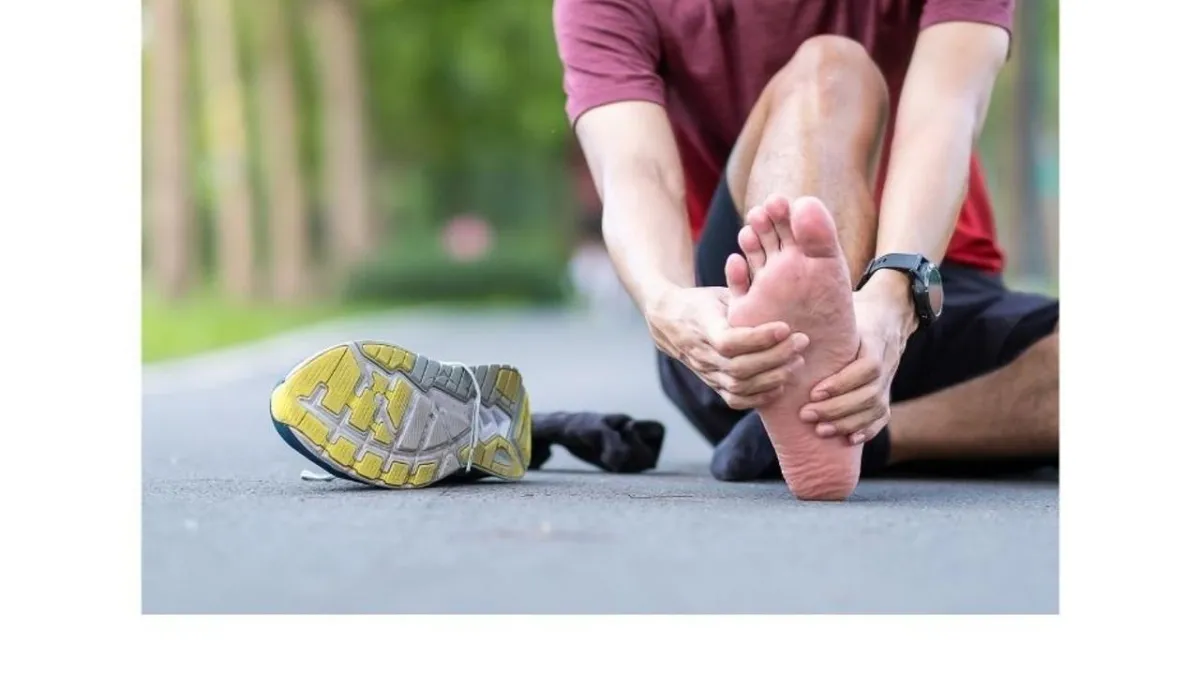
We have all been there, neglected a niggle in our foot and told ourselves that it would probably go away. Weeks have passed, even months, and it’s only getting worse. Then finally, when we are hobbling around barely able to walk, we decide to seek help…
Well, at Achilles Foot Clinic, we are here to help you.

Plantar Fasciitis- Everything You need to Know
Are you suffering from heel pain?
Is it painful to walk the first few steps in the morning? Is it sore after rest?
You may have plantar fasciitis. Don’t ignore this pain, hoping it will go away, as it usually gets worse without treatment.
In this blog on Plantar Fasciitis, we’ll look at the symptoms and causes of this condition.
Plantar Fasciitis is one of the most common causes of heel pain and I’m sure we have all know someone who has it.
Thankfully here at Achilles we are experts in diagnosing and
treating plantar fasciitis.
So what is Plantar Fasciitis?
The plantar fascia is a tissue that runs along the sole of the foot connecting the heel bones to the toes, creating the arch of the foot.
When the plantar fascia is overstretched it becomes inflamed and that is what we call plantar fasciitis.
Try to think of plantar fasciitis as a rope pulling away from the heel bone causing heel and arch pain.
If tension and stress on this becomes too much, it can lead to the development of small tears, causing irritation and inflammation.
Pain may occur either where it inserts into the base of the heel bone causing heel pain, or along the sole of the foot between the heel and the toes.
Plantar fasciitis can lead to intense, chronic heel pain if the cause of the pain is not addressed, with the severity varying person to person.
Signs & symptoms of Plantar Fasciitis
Plantar fasciitis commonly causes a sharp, stabbing pain at the inner part of the bottom of the heel, sometimes extending into the arch of the foot.
This pain usually occurs with the first few steps in the morning when getting out of bed.
Swelling may occur but not always.
As the fascia stretches as you walk, the pain of plantar fasciitis normally decreases.
The pain may reoccur after long periods of standing or when getting up after periods of rest.
The pain may be worse after exercise, it is not usually experienced during the actual activity itself.
Barefoot walking should be avoided, particularly on hard surfaces such as tiles, as this can worsen the condition.
Changing the way you walk to reduce plantar fasciitis pain should be avoided, as it might lead to foot, ankle, knee, hip or back issues. Ignoring plantar fasciitis may result in chronic, long term heel pain which impacts on day to day activities.
Risk factors for Plantar Fasciitis
Age - most common between the ages of 40 and 70 - particularly in those who are more active.
Poor footwear - shoes which lack support around the heel and arch area, with thin, over flexible soles can lead to plantar fasciitis, as the feet are not supported, causing stress on the plantar fascia. Loose fitting and non-shock absorbing footwear such as flip flops provide inadequate foot protection and support.
High impact activities - running, dancing, jumping activities put a lot of pressure on the soles of the feet.
Foot type and mechanics - a flat foot, high arch, or pronation (fallen arches) can affect the weight distribution and can put too much strain on the plantar fascia.
Tight, shortened calf muscles and Achilles tendon - when the calf muscles and Achilles’ tendon are tight and tender, it usually means the plantar fascia is also very tight and not functioning as it should. You can undertake a stretching programme to combat this.
Weight - excess pounds overload the plantar fascia, especially after sudden weight gain.
Pregnancy - women can experience episodes of plantar fasciitis, especially during the late stages of pregnancy as swelling can occur and footwear can be an issue.
Occupation - healthcare workers, teachers, waiters, chefs and others who spend the majority of their time walking or standing on hard surfaces are more prone to plantar fasciitis.
How Is Plantar Fasciitis treated?
To minimize plantar fasciitis symptoms and heal your plantar fascia, use this 3-step approach:
Step 1 - Comprehensive Foot and Ankle examination
Our experiened and knowledgable practitioners will examine :
Your foot and ankle range of movement
Your joint alignment
The biomechanics of the way your walk
Your muscle strength and tone
To identify exactly what is causing your foot pain
Step 2 - Latest Technology for Plantar Fasciitis Treatment
Achilles Foot Clinic continually invest in the latest and most cutting edge technology when it comes to resolving our patients Plantar Fasciitis
We use video motion Gait Analyses to allow us to examine every part of your gait in detail no matter how fast you move.
We are one of the few clinics in Ireland to use both 3D scanning equipment like they have on the space station and our 3D Printed Orthotics when needed for Plantar Fasciitis.
Step 3 - Recovery
Each treatment aims to gently and progressively get your foot and ankle moving again without pain, as quickly as possible, to allow you to get back to normal and start doing the things you love.
We will give you a structured rehabilitation exercise program, to help break the cycle and prevent the problem from returning
HOW CAN I PREVENT PLANTAR FASCIITIS?
Preventing plantar fasciitis comes down to taking good care of your feet, maintaining flexibility, maintaining a healthy weight and exercising regularly. Once your symptoms go away, you can go back to your normal lifestyle. Here are some tips to prevent plantar fasciitis:
Take care of your feet - Buy well-fitting shoes with plenty of support and stability. Supplement their existing arch support with arch support insoles or custom orthotics.
Maintain flexibility - Even if you're not an athlete, you should stretch your calves and Achilles tendon daily.
Maintain a healthy weight - If weight was a factor in the development of plantar fasciitis, this is extra important.
Exercise regularly -Make sure you find time in your busy schedule to exercise. But remember, always start a new plan gradually and wear correct gear. If you tend to only run, try mixing-up your workout routine. Add a couple days of swimming or biking to offset the wear and tear your feet experience while hitting the pavement.
Plantar fasciitis can be painful – and annoying – but with the proper treatment and the implementation of preventative measures, you won't have to experience it again.
If you are suffering with Plantar Fasciitis call us Now :
Ballincollig 0212021001
Ask Lorcan And His Team
Fill in the form to request a Call From Our Team
Fill in the form to request a Call From Our Team
One of our team will call you for FREE and answer any questions or concerns you may have about Bunions.
One of our team will call you for FREE and answer any questions or concerns you may have about your uncomfortable Bunions.








